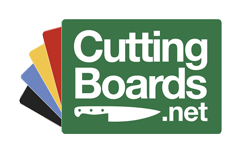What Type of Cutting Board is Best for My Kitchen?
As a homeowner or a professional chef, choosing the right cutting board is a crucial decision to make. It not only affects the quality of your food preparation but also ensures the longevity of your kitchen tools. When it comes to cutting boards, two of the most popular materials are wood and plastic. Each material has its own unique pros and cons, so it is important to understand which is best for your kitchen. In this article, we will be discussing the differences between wood and plastic cutting boards and when it is best to use each.
Wood Cutting Boards
Wood cutting boards are a classic option that has been used for centuries. They are made from a variety of hardwoods such as maple, cherry, walnut, and more. These cutting boards are durable, and the natural texture of the wood helps to keep your knives sharp. They also have a warm, rustic look that adds a touch of elegance to any kitchen.
Pros:
- Durable: Wood cutting boards are very durable and can last for many years if properly maintained.
- Knife-friendly: The natural texture of the wood helps to keep your knives sharp, making them a great choice for frequent use.
- Antimicrobial: Some species of wood have antimicrobial properties, making them a safer choice for food preparation.
- Environmentally friendly: Wood is a renewable resource, making it a more environmentally friendly option compared to plastic.
- Prone to warping: Wood is a porous material that can absorb moisture, leading to warping and cracking over time.
- Difficult to clean: Wood can be difficult to clean and disinfect, especially if it is not sealed properly.
- Require maintenance: Wood cutting boards require regular oiling to maintain their appearance and prevent cracking.
- Cutting fruits and vegetables
- Carving meat
- Bread and pastry making
Plastic Cutting Boards
Plastic cutting boards are a popular choice for many people due to their affordability, ease of maintenance, and versatility. They are made from various types of plastic such as polyethylene, polypropylene, and more. Plastic cutting boards come in a variety of colors, making it easy to designate a different board for different types of food to prevent cross-contamination.
Pros
- Affordable: Plastic cutting boards are a more affordable option compared to wood.
- Easy to clean: Plastic cutting boards are easy to clean and can be disinfected in the dishwasher.
- Lightweight: Plastic cutting boards are lightweight, making them easy to handle and maneuver.
- Available in different colors: Plastic cutting boards come in a variety of colors, making it easy to designate a different board for different types of food.
- Less durable: Plastic cutting boards are not as durable as wood and can become dull over time.
- Not knife-friendly: Plastic cutting boards can dull your knives faster compared to wood.
- Not environmentally friendly: Plastic is a non-renewable resource and can take hundreds of years to decompose, making it a less environmentally friendly option.
- Cutting raw meat
- Chopping herbs
- Preparing seafood
When choosing between a wood and a plastic cutting board, it is important to consider your personal preferences, cooking habits, and kitchen needs. Both materials have their own unique pros and cons, and the best choice for you will depend on your specific needs. If you are looking for a classic, durable option that adds a touch of elegance to your kitchen, a wood cutting board is the way to go. However, if you are looking for a more affordable option that is easy to clean after a long day prepping meals, a plastic cutting board may fit your needs better. Luckily, you can find both options here on Cuttingboards.net. We offer both standard sized cutting boards as well as custom options for you to create your own perfect cutting board.

